It’s our sincere hope that each of you, our readers, will thoroughly enjoy and appreciate this article we present to you about these 5 Stunning Pacific Ocean Sharks. It was certainly our pleasure to gather the data for you. May it provide you with both education and increased awareness.
Certainly, these few species listed herein, amazing though they are, represent only a portion of the similar species in this location. It’s our belief, though, that they serve as excellent representations of the related wonders found here. Check out some of our other articles for similar marvels.
Oceanic whitetip shark
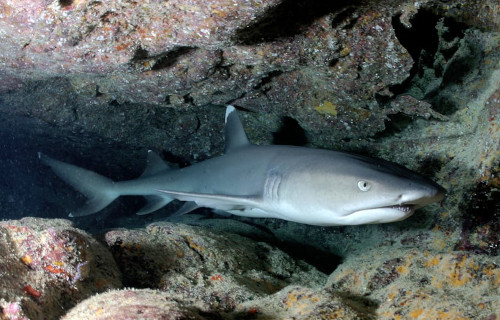
Oceanic whitetip shark Facts
- Starting off this article about these 5 Stunning Pacific Ocean Sharks we present the remarkable creature best known as the Oceanic whitetip shark.
- This majestic yet dangerous predator of the depths most frequently goes by the descriptive common name throughout its natural range. Yet, the animal also holds less often used titles. These include such terms as nigano shark, brown shark, and simply whitetip shark.
- Within the scientific community, however, it’s perhaps much better known by its formal moniker. But that’s an extremely hard name to pronounce for the layperson. That’s because this marvel of nature bears the complex technical title of the Carcharhinus longimanus.
- A degree of controversy persists inside the halls of science, though, concerning that specific appellation. The first known formal description of the fish occurred in 1831, due to the work of the French naturalist, René-Primevère Lesson, who gave it a somewhat similar name.
- The next description of the fish, however, took place in the year 1861, at the hands of the Cuban zoologist, Felipe Poey. He also provided it with a similar yet different moniker. Given this confusion, and still others, the name used here is generally the most accepted.
- Sadly, the population of the remarkable Oceanic whitetip shark measures quite small. It also appears to be continuing to diminish at an alarming rate. That state apparently holds true throughout its range. The IUCN thus currently lists the fish as Critically Endangered.
- It faces numerous threats to its continued existence. Most of these stem from the actions of man. These include such factors as being actively fished for its meat and fins. The creature also now faces the dual dangers posed by habitat loss and ongoing climate change.
Oceanic whitetip shark Physical Description
The mesmerizing Oceanic whitetip shark immediately captivates many fortunate enough to encounter the animal in its native environment. Unlike some species, though, it does so for several reasons. That’s due to the fact that it’s visually impressive due to both its appearance and size.
In that respect, the shark follows a pattern common among many of its relatives. That’s true since it displays a certain degree of the physiological characteristic known as sexual dimorphism. In its specific case, this trait manifests itself purely in terms of physical measurements.
More precisely, the female of the species attains a slightly greater overall size than her male counterparts. This gender of the intriguing fish reaches an average body length of roughly 12.8 ft (3.9 m). These individuals further grow to an average body mass equaling 374.8 lb (170 kg).
Males of the creature, however, only attain an average length of body measuring about 9.8 ft (3 m). They do tend to have a slightly stockier build than the females, though. Due to this general development, their body mass is an only slightly lighter average of about 368 lb (167 kg).
In terms of overall appearance, other than this, however, both sexes of the Oceanic whitetip shark remain virtually indistinguishable at a quick glance. The upper body of the fish typically displays a gray-bronze shade. Its lower body, though, generally manifests an off-white shade.
Yet it’s the fins of the animal that serve as the source of the common name. Most of these display a bright white tip. Each fish also presents a mottled pattern among adults, and black in younger specimens. A patch resembling a saddle somtimes appears between two dorsal fins.
- Kingdom: Animalia
- Phylum: Chordata
- Class: Chondrichthyes
- Order: Carcharhiniformes
- Family: Carcharhinidae
- Genus: Carcharhinus
- Species: C. longimanus
Oceanic whitetip shark Distribution, Habitat, and Ecology
The fascinating Oceanic whitetip shark evolved as native to an extremely broad swathe of the globe. The full extent of that zone of habitation might surprise some people, though. That’s because this wonder of evolution lives in oceans worldwide between latitudes 45 N and 43 S.
The vast majority of this range of appearance consists of relatively to extremely deep waters. The creature also displays decided preferences for the temperature of the waters it lives in, as well. It also seems to favor temperatures above 68F (20C), and up to approximately 82F (28C).
Yet it also shows some moderate flexibility in this regard. That’s true since a certain percentage of observed specimens appeared in waters with a temperature equaling about 59F (15C). The animal does, however, seem to studiously attempt to avoid temperatures lower than this.
Despite mainly living in regions of great depths, though, it spends most of its time in the upper layers of the ocean. Most sightings occur at depths of no greater than 490 ft (150 m). Though most individuals remain offshore, some do venture into areas as shallow as 120 ft (37 m).
The beautiful Oceanic whitetip shark typically lives a primarily solitary life, like many. Small, temporary groups do sometimes form, however, for hunting and feeding purposes. The animal also evolved as an active hunter, swimming and seeking out prey by both day and night equally.
As a general principle, the fish usually feeds on an impressive variety of cephalopods, like small squid, and bony fish, such as oarfish and barracuda. Yet it sometimes varies this, adopting a more flexible diet. At these times, it eats such prey as stingrays, birds, crustaceans, and sea turtles.
Zebra Shark
Zebra Shark Facts
- Next up in this compendium of these 5 Stunning Pacific Ocean Sharks comes the colorfully-named marvel called the Zebra Shark.
- In a strange turn of events, this fascinating ocean fish most frequently goes by the unusual, as well as deceptive, common name we’ve used herein. Unusually , for the moment, the remarkable sea-dwelling species has no other generally accepted common name.
- Professionals, such as researchers, meanwhile, typically refer to the creature by its scientific name. That term, however, as with many such instances, remains somewhat hard to pronounce. That’s because the fish formal scientific name’s Stegostoma tigrinum.
- The first known official recording of it as a separate and distinct species took place in 1758, due to the efforts of the Dutch zoologist, Albertus Seba. He received the well-deserved accreditation posthumously, however, since the man himself died several years earlier.
- Unfortunately, the population of this amazing creature appears to be declining. Moreover, this regrettable trend seems to hold true throughout the entirety of its known range. The IUCN, therefore, presently lists it as Endangered on its Red List of Threatened Species.
- Presently, the leading culprit for its decline in population continues to be commercial fishing practices. This holds true because the natural wonder continues to be actively sought after across most of its range. It’s principally sought for its meat, liver oil, and fins.
- The impressive Zebra Shark nevertheless faces other threats to its existnce, however. Habitat loss poses an increasing threat, as man intrudes into its domain, of course. The greatest potential threat it faces, though, likely comes in the form of ongoing climate change.
Zebra Shark Physical Description
The Zebra Shark certainly impresses its fair share of those who encounter the creature in its native habitat. It does not do so, however, due to sheer size. That’s because, in that particular respect, this stunning marvel of Nature represents only a roughly average-sized species of its kind.
It does differ from many of its brethren in that regard, however, This holds true due to the fact that this specific species does not display any noticeable degree of the physiological characteristic of sexual dimorphism. This tendency makes distinguishing the two genders quite difficult.
The two sexes therefore present virtually identical sizes and patterns of coloration to the observer. An average body length for a fully mature adult of either sex reaches roughly 8.2 ft (2.5 m). Exceptional specimens, however, do occasionally attain lengths of as much as 11 ft (3.5 m).
In general, the body of this amazing animal manifests a strongly cylindrical shape. The head usually develops as slightly flattened, and possessed of a blunt, short snout. Its eyes also develop as quite small, and appear on the sides of the head. The species further manifests 5 gill slits.
The somewhat confusing name of the Zebra Shark derives from the appearance of the immature individuals. These examples manifest a distinctly different pattern of coloring that the adults. As the common name clearly implies, the immature shark presents stripes, like a zebra.
The adults of the species, meanwhile, develop a distinctly different pattern as they age. Most mature individuals present a light background, typically various shades of tan. This, though, also has a covering of numerous small spots. These markings appear a dark brown to black in color.
- Kingdom: Animalia
- Phylum: Chordata
- Class: Chondrichthyes
- Order: Orectolobiformes
- Family: Stegostomatidae
- Genus: Stegostoma
- Species: S. tigrinum
Zebra Shark Distribution, Habitat, and Ecology
Fortunately, the stunning Zebra Shark appears to be endemic to a relatively wide swathe of the oceans of the world. This further seems to hold true in comparison with many, though, certainly, not all known species of sharks. Yet known range of the fish remains respectable.
More precisely, however, it seems to inhabit specific portions of the Indo-Pacific region. Within that greater range, though, the marvel only makes its home in the tropical waters of the area. That range extends from South Africa, through the Red Sea, to India, and all the way to Australia.
In all the regions of its range that the shark appears in, however, the animal displays decidedly clear preferences for its choice of habitat. In this, it possesses two very specific requirements. The creature only lives within the intertidal zone, and lives as a bottom-dwelling species.
Within that habitation zone, though, the great majority of individuals live their lives in various locations. Specimens appear at maximum recorded depths measuring no more than 203 ft (62 m). Most individuals, in fact, prefer shallower depths. These often swim along the continental shelf.
The Zebra Shark evolved as primarily nocturnal in nature. Most individuals remains comparatively sluggish by day, typically moving very little. These individuals most often appear on the ocean floor, frequently facing into the current. This facilitates their breathing while minimizing movement.
By night, however, the impressive animal transforms into an active, powerful swimmer and hunter. It mainly feeds on small fish, various crustaceans, and possibly sea snakes. Typically a solitary creature, it nevertheless occasionally bands together in large groups for unknown reasons.
Scalloped Hammerhead
Scalloped Hammerhead Facts
- Our next choice for inclusion in this listing of 5 Stunning Pacific Ocean Sharks bears the unmistakable title of Scalloped Hammerhead for good reason.
- That undeniably attention-grabbing name currently serves as the most frequently used common name for truly this remarkable fish. It’s also known by several others, though. Those include terms such as the kinky-headed shark, bronze, and southern hammerhead.
- Within scientific circles, though, the creature’s better known by its formal moniker. Fortunately for the layperson, though, that’s a much simpler term than many of its relatives hold. That’s because it bears the official name in the annals of science of Sphyrna lewini.
- It received that technical name due to the efforts of the team of Edward Griffith and Charles Hamilton Smith. The highly respected pair of British naturalists accomplished the first formal acknowledgement of it as a separate and distinct species. This occurred in 1834.
- The two individuals originally gave it another, different title, however. Before changing it to the term it’s known by now, the pair at first titled it Zygaena lewini. Regardless of which name one chooses to use when referring to it, the shark remains a truly impressive fish species.
- Sadly, however, the population of the remarkable Scalloped Hammerhead presently appears to be in stark decline. This unfortunate trend also seems to hold true throughout the entirety of its known range. The IUCN therefore currently lists it as Critically Endangered.
- The fish faces many threats to its continued existence. Previously, this mostly consisted of overfishing, as it was hunted in some regions. Due to its fragile population numbers now, though, it likely faces its greatest danger going forward from climate change.
Scalloped Hammerhead Physical Description
The remarkable Scalloped Hammerhead fascinates most of those fortunate enough to encounter it. Unlike some of its kindred, though, it does so for more than one reason. In this intriguing species, Nature created a true masterpiece that continues to tantalize many researchers even today.
The intriguing species grows to highly respectable physical measurements. It also follows the pattern common among most of its relatives, though, regarding that statistic. That’s true since the animal displays a moderately large degree of the physiological characteristic of sexual dimorphism.
Although the genders present the same general appearance, the size varies significantly between them. More precisely, females of the species typically attain a much greater size than their male counterparts. That’s a trend common among most known species of shark around the world.
The females attain an average body length measuring roughly 8.2 ft (2.5 m). They’re surprisingly light, however. Most of this sex average 80 lb (36.2 kg) in weight. Exceptional individuals do occur, of course. But even these rarely exceed these measurements by any significant degree.
Males of the Scalloped Hammerhead, however, usually remain much smaller in both categories. Body length averages 4.9 – 5.9 ft (1.5 – 1.8 m). They’re body mass ranks appropriately smaller as well. This equals 64 lb (29 kg). The largest specimen on record measured 14 ft (4.3 m) in length.
In overall appearance, though, the two sexes remain virtually indistinguishable. The coloring of the remarkable creature generally consists of varying shades of light gray. Its’ most distinctive feature, though, is obvious. That’s the large hammer-shaped head, thus the common name.
- Kingdom: Animalia
- Phylum: Chordata
- Class: Chondrichthyes
- Order: Carcharhiniformes
- Family: Sphyrnidae
- Genus: Sphyrna
- Species: S. lewini
Scalloped Hammerhead Distribution, Habitat, and Ecology
The remarkable Scalloped Hammerhead evolved as native to a relatively broad swathe of the marine areas of the globe. The general area, however, likely won’t surprise many people. That’s becasue it evolved as endemic to the section of the oceans that ranges from roughly 46°N to 36°S.
Within that widespread zone of habitation, though, certain areas see greater numbers. These principle regions include the waters off South Africa and Japan. Other zones of concentration include the Indian Ocean, Red Sea, and the warm waters of Hawaii, Tahiti, and Australia.
Inside of that range, however, the impressive animal displays decided and highly specific preferences regarding its choice of habitat. In all areas the shark inhabits, it primarily lives near the coast. It’s most frequently sighted either over or comparatively near the continental shelves.
The marvel of Nature also appears only in either warmer temperate or tropical waters. It’s not a deep-diving species, by any means. A maximum observed depth for the species only equals 3,400 ft (1.03 km). Most often, however, individuals spend their time above depths of 82 ft (25 m).
The Scalloped Hammerhead typically lives in relatively large groups, called schools. Unlike many other related creatures, though, it remains active at all times of the day and night. Compared to some of its many relatives, they’re considered relatively docile in their behavior patterns.
Like all sharks, the wonder evolved as a fully carnivorous species. It principally feeds on prey such as various small fish, octopi, and squid. It’s also an opportunistic hunter, feeding on whatever prey’s locally available. In turn, its own predators mainly consist of larger varieties of sharks.
Horn Shark
Horn Shark Facts
- Now making its appearance in this compilation of 5 Stunning Pacific Ocean Sharks we give you the fascinating marine creature named the Horn Shark.
- For understandable reasons, this intriguing product of Nature and evolution bears the simple yet descriptive common name that we’re applying. The official scientific name for it, however, as is so often the case in such instances, doesn’t roll of the tongue quite so easily, however.
- That’s due to the fact that professional researchers know the creature best by the term of Heterodontus francisci. It originally bore another name, though. The respected French biologist, Charles Frederic Girard made the first formal recognition of it as a species.
- This scientifically noteworthy event occurred in the year 1855. At that time, that researcher named it Cestracion francisci. That name, however, subsequently changed several times. The assignment of the official moniker the fish bears now actually took place many years later.
- For the moment, the IUCN has no official listing for the creature on its Red List of Threatened Species. It’s presently formally noted as Data Deficient, though. Ongoing research, however, will hopefully redress the lamentable lack of information in this particular area.
- Thankfully, the remarkable Horn Shark isn’t intentionally fished, either commercially or recreationally. Comparatively small numbers do sometimes fall victim to accidental bycatch, however. The shark is nevertheless sometimes used as fishmeal in parts of its endemic range.
- The remarkable fish nonetheless does face some potential threats to its continued existence as a species, though. Like most forms of life around the world, it’s potentially at risk due to climate change. Because of the nature of its range, habitat loss also poses a danger.
Horn Shark Physical Description
Although the amazing Horn Shark certainly impresses those who encounter it, it doesn’t do so due to sheer size. That’s because this particular animal ranks as moderately small for its kind. The marvel nonetheless possesses its own fair share of impressive physical characteristics.
This fascinating creature, like most of its many kindred around the world, manifests a small degree of the physiological characteristic of sexual dimorphism. In its case, again following the typical pattern of its genus, this manifests in terms of a difference in size, though this remains small.
More specifically, the females of the amazing species generally attain a slightly greater length than their male counterparts. This gender further reaches an average length equaling about 3.3 ft (1 m). Exceptional specimens do occur, however, sometimes measuring as much as 3.9 ft (1.2 m).
Forming a variety of fish that’s generally known as a bullhead shark, the intriguing animal has a short, comparatively wide head. It also displays a blunt snout, with pronounced ridges over its eyes. The mouth develops as small and somewhat curved, with strong furrows appearing at the corners.
Intriguingly, the body of the Horn Shark most commonly has a strongly cylindrical form to it. This body further displays two high, prominent dorsal fins, possessing strong, sharp spines. Color further varies significantly between individuals, though some patterns naturally predominate.
These typically consist of yellowish on the underside of the body, and varying shades of brown or gray otherwise. Numerous small dark spots also dot the body at random. These markings, however, often disappear as it ages. Yet another small patch of dark spots appears below both of its eyes.
- Kingdom: Animalia
- Phylum: Chordata
- Class: Chondrichthyes
- Order: Heterodontiformes
- Family: Heterodontidae
- Genus: Heterodontus
- Species: H. francisci
Horn Shark Distribution, Habitat, and Ecology
Regrettably, the fabulous Horn Shark inhabits a comparatively restricted portion of the marine regions of the surface of the world. That’s due to the fact that the animal only appears in a small portion of the eastern Pacific. That’s the continental shelf, off the east coast of North America.
Even there, though, this marvel only lives within an extremely limited range, to the knowledge of researchers. The bullhead shark appears to live in a range that begins off the coast of California, in the United States. From there, this further extends to the Gulf of California, in Mexico.
As a general rule, the species lives in very shallow waters in its native range. Throughout most of the year, it typically appears at depths ranging from between 6.6 – 36.1 ft (2 – 11 m). During the winter months, however, the animal migrates to depths measuring greater than 98 ft (30 m).
It most frequently makes its home in areas comprised of either algae beds or complex rocky reefs. Some specimens, though, have also been spotted in caves, at depths of up to 660 ft (200 m) in winter. It also often makes use of moderately large pits dug out by various species of ray.
Individuals of this remarkable species further evolved as strongly benthic in nature. As a result of this natural trait, most specimens rarely move more than 6.6 ft (2 m) from the ocean floor. Interestingly, as a general principle, individuals migrate to shallower waters as they age.
The Horn Shark only swims sporadically, as a general rule. Although small groups have been spotted, it most commonly lives a highly solitary life. The majority of its diet consists of various hard-shelled mollusks and crustaceans. It also eats small quantities of sea stars and peanut worms.
Swell Shark
Swell Shark Facts
- Closing out this article about these 5 Stunning Pacific Ocean Sharks comes the awesome denizen of the depths typically referred to as the Swell Shark.
- This highly intriguing species of fish, most frequently known by this attention-grabbing common name, is a variety of what’s collectively called catsharks. Interestingly, for the moment, this product of Nature and evolution has no other regularly used general name.
- Scientific professionals, meanwhile, tend to refer to the impressive creature by its formal, technical name. That, however, is the somewhat hard to pronounce term of the Cephaloscyllium ventriosum. By either term, though, it’s a fascinating type of fish.
- The American zoologist, Samuel Walton Garman, made the first formal recognition of the animal as a separate and distinct species. He further accomplished this scientifically noteworthy action in the year 1880. A certain amount of confusion surrounds it, though.
- That’s because, despite the fact that he made the initial acknowledgement of the species, he originally assigned it the different name of the Scyllium ventriosum. The renaming of the amazing animal to the appellation in current use only took place many years later.
- Fortunately for the unique Swell Shark, it appears to be maintaining a population base that’s both sizeable and relatively stable. This fortunate situation also seems to hold true throughout the entirety of its range. The IUCN, therefore, lists it as a Species of Least Concern.
- Neverthless, it does face at least some concerns, however. Though not actively fished commercially, it’s nonetheless occasionally caught as bycatch. The greatest threat to its existence, though, most likely comes in the form of climate change, like other species.
Swell Shark Physical Description
The fabulous Swell Shark certainly garners its proper share of attention from those who appreciate Nature, and justifiably so. The marvel does not do so, however, due to sheer physical size, like some of its many relatives. That’s because it evolved as a relatively diminutive shark variety.
Much like many of its kindred around the globe, this amazing fish displays a moderate degree of the physiological characteristic of sexual dimorphism. In its particular case, though, this evolutionary trait manifests itself in terms of sheer overall physical size, not in simple appearance.
More specifically, the females of the uniquely evolved species attain a slightly greater average physical length than their male counterparts. The overall difference, however, generally remains comparatively minor. Mature adults of the species typically reach body lengths of 35.4 in (90 cm).
Exceptional individuals of both genders do occasionally occur, though. These outstanding specimens sometimes reach lengths measuring up to as much as 43.3 in (110 cm). Although reports of larger specimens do exist, no reliable confirmation of such individuals currently exists.
The bodies of each gender of the remarkable Swell Shark also develop in a visually extremely distinctive manner. Both sexes develop broad, flat heads. The eyes further provide a distinctive look, being gold in color, with nictitating eyelids. The gills tend to be quite small and tight in nature.
The amazing creature also presents an intriguing pattern of coloring. This typically consists of a brownish-yellow background, with white and brown spots on much of the body. These markings do not appear on the fins, however. The overall color scheme further tends to darken with age.
- Kingdom: Animalia
- Phylum: Chordata
- Class: Chondrichthyes
- Order: Carcharhiniformes
- Family: Scyliorhinidae
- Genus: Cephaloscyllium
- Species: C. ventriosum
Swell Shark Distribution, Habitat, and Ecology
Although its population appears to be stable, the Swell Shark does not possess an extremely extensive range of habitation. That’s due to the fact that the truly distinctive small shark only inhabits a limited portion of the Pacific Ocean. That consists of a small part of the eastern section.
To the north, this endemic zone of habitation extends up to the marine region located just off the coast of central California, in the United States. From there, though, it extends sharply south. The southern extremity of its primary range reaches to about the southern part of Mexico.
There’s also a very small, completely isolated population of the fish that exists separately. Incredibly, that isolated subgrouping appears off the coast of Chile. This increases its overall range, but leaves in broken. In all parts of its range, however, its own nature limits its potential expansion.
That holds true due to yet another preference the awesome creature regularly displays in terms of its choice of environment. This marvel prefers to spend most of its time either at or near the floor of the ocean. But it also prefers this to be in shallow regions, where the depths remain minor.
The known depth range of the Swell Shark also extends fromapproximately between 16.4 – 1,499 ft (5 – 457 m). The majority of specimens actually live between 16.4 – 121.4 ft (5 – 37 m), however. There, it generally makes its home along algae-covered stony bottoms, and hunts crustaceans.
Here, the unusual fish spends its daytime hours hiding from its own predators. Its own threats are quite numerous, but it evolved the defense which gives birth to the common name. If threatened, it can draw enough water into its body to swell in size, making it a much more difficult target.
5 Stunning Pacific Ocean Sharks
We truly hope that each of you greatly enjoyed reading, and hopefully learning something from, this article we’ve written about these 5 Stunning Pacific Ocean Sharks. It’s also our fervent hope that doing so has left you with either a new or renewed appreciation for such wonders of Nature.
Unfortunately, however, many of their numerous kindred located around the world now find themselves facing strong threats to their continued existence as a species. Many of those dangers, in fact, stem from the actions of mankind. We must do all we can to protect and preserve them all.
Check out our other articles on 4 Novel New Guinea Reptiles, Earth’s Many Stunning Waterfalls, 6 Magnificent Carnivorous Plants, Native North American Mammals
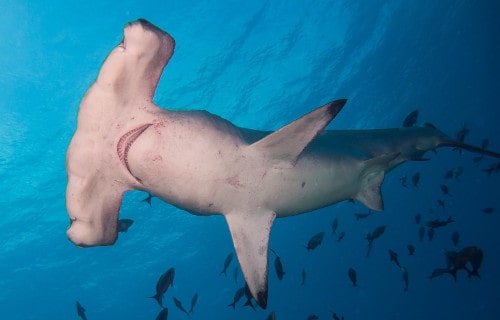


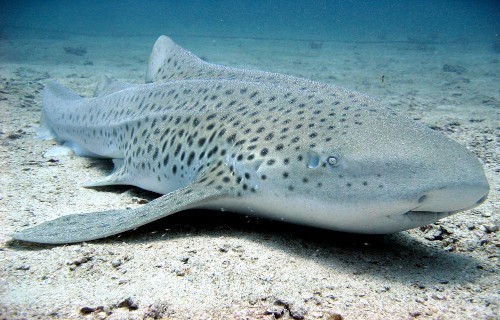


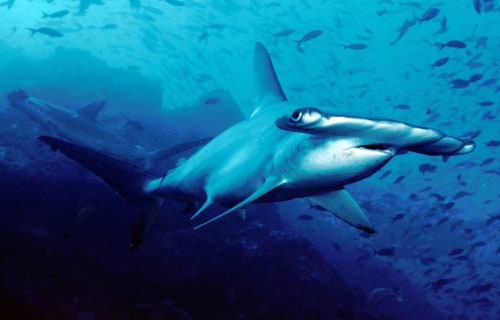
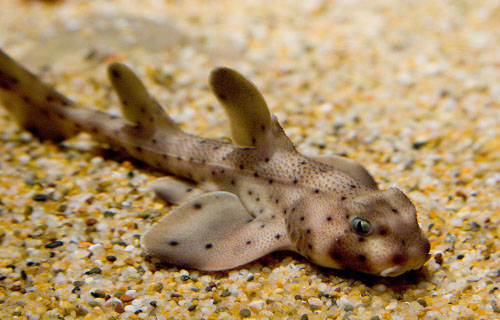
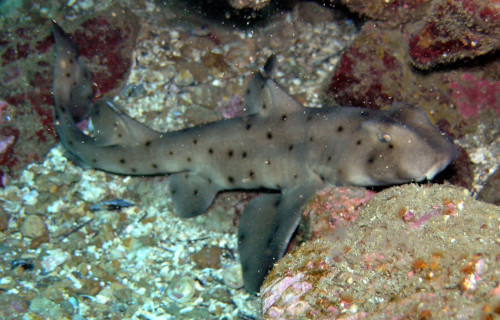
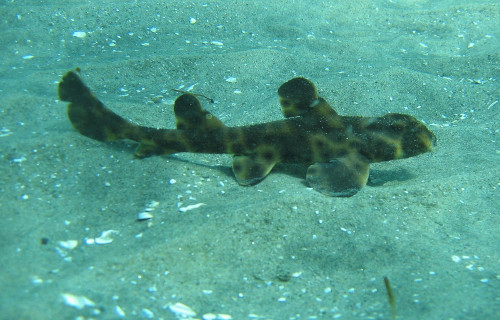
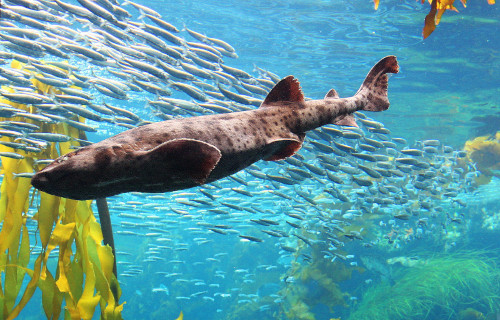
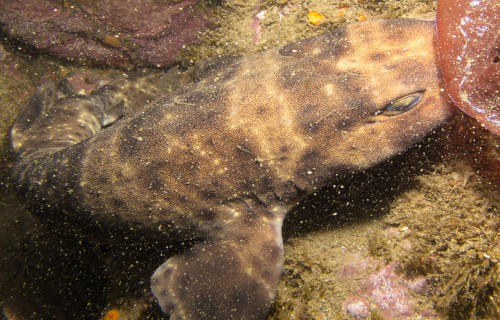
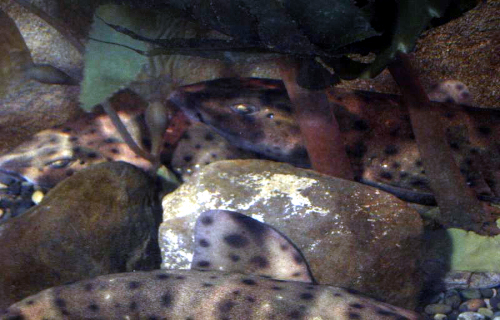









Leave a Reply